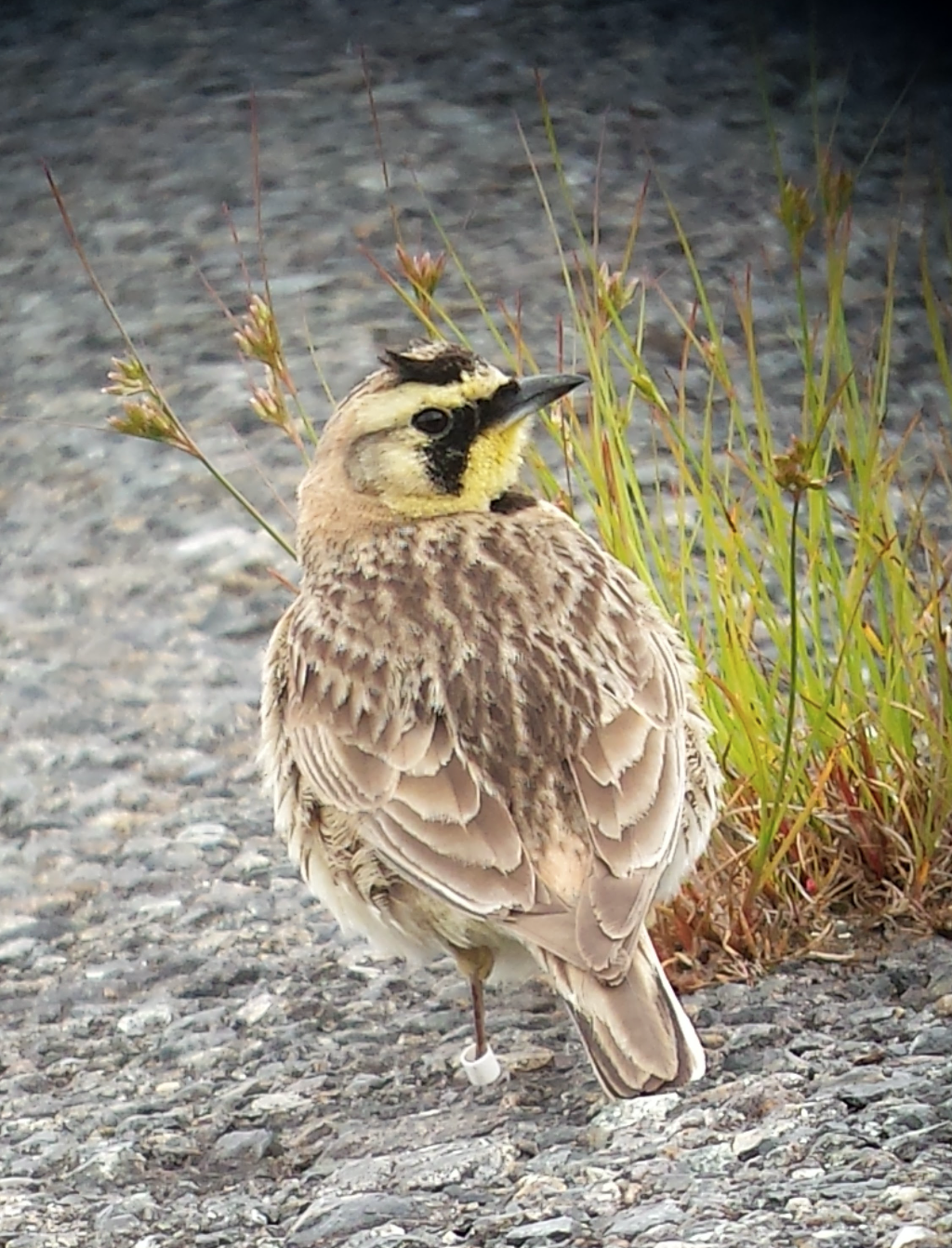
Streaked horned larks, named for their black horn-like feathers, were once abundant in Northwest prairies but have declined rapidly since the 1950s.
Center for Natural Lands Management
An environmental group is suing the U.S. Fish and Wildlife Service to increase protections for a small ground-nesting bird called the streaked horned lark.
The lark once ranged from the grasslands of Southern Oregon north into Canada, but now can only be found in the Willamette Valley and Puget Sound region. It was listed as threatened under the Endangered Species Act in 2013.
The Center for Biological Diversity is suing to raise the bird’s status to “endangered.” They are also to trying to get rid of an exemption for farmers and airports that threaten the lark’s nesting habitat.
“So it can handle some disturbance, but what it can’t handle is having its nests run over, plowed over, mowed over during the spring— during the short breeding season,” said Noah Greenwald, the Center’s endangered species director.
Nests could be protected by locating and avoiding them during mowing, something that would take time and resources to accomplish.
In 2015, the state of Washington reported about 300 larks still alive in the state. A few years earlier, the Oregon population found to be fewer than 1300. The lawsuit says the current protections aren’t enough to prevent future population declines.
The suit was filed in U.S. District Court in Portland.
Streaked horned larks are known to live around the airports in Portland, Corvallis, Eugene, Salem, McMinnville and Independence.
There's also a population at Joint Base Lewis-McChord south of Tacoma, Washington. There, the military uses biologists to locate lark nest sites and then avoids them during military training exercises.
The U.S. Fish and Wildlife Service did not respond to a request for comment.
